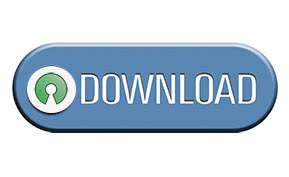Open Source
Understanding Open Source Software and How It Differs from Free Software

Navigating the world of open source software can be a tricky game. For the uninitiated, it can seem like the regular rules of the software industry have been turned on their head — and in some ways, that’s true. It can be enticing to think that you can nab a full-featured software system without spending a dime, but before you download a “free” software system, be sure that you know what to look for when you’re doing your software shopping.
What’s the Difference Between Open Source and Free Software?
Since the 1980s the “free software” and “open source software” movements have been small but steady, focused on ensuring quality software is available for public use. Oftentimes these systems are built collaboratively, or else allow users to alter them significantly. The term “free software” is often misinterpreted to mean “software that you don’t have to pay to use.” However, within the software industry, the term is often used to denote software that is more about the freedom of users to use, copy and change as they see fit. Richard Stallman says it best in a piece on the nuances of free software: “think of ‘free speech,’ not ‘free beer.’ ”
Benefits of Open Source:
 More affordable, often free to use
More affordable, often free to use
 Customizable code
Customizable code
 Scalable; paid editions available
Scalable; paid editions available
Open source software functions under more or less the same tenets as free software; the source code is available to users, who can amend and redistribute it. However, open source software is not always cost-free, and depending on the platform, may have restrictions on the changes that can be made. For instance, xTuple, an open source ERP that we’ve profiled in the past, provides a cost-free version of their ERP, PostBooks, but users can also choose to purchase commercial licenses for added support, services and functionality.
Having difficulty understanding open source software, the different types and their unique backgrounds? The Open Source Initiative and the Free Software Foundation each have a wealth of information about their respective software movements, and can provide a more detailed explanation of the differences between the two.
Why Go With Open Source?
Once it’s been published, open source software is essentially independent from the company that developed it. It’s not unusual for smaller software companies to get bought out and incorporated into larger ones, and sometimes users of that older software get lost in the shuffle. While this can be problematic for proprietary software users, open source software users can be assured that their software will likely still be available. Even if the developing company fails or stops maintaining their source code, the open source software can live on and continue to be maintained by the community.
Another big advantage is that open source and free software are infinitely more flexible than proprietary software. Users are allowed and encouraged to alter and build upon the original source code to make their system better, stronger and more fitting to their needs in general. If you’re looking for power and flexibility, open source software gives you a starting point to create exactly what you want and need for your business.
But Is It Really Free?
Potential Open Source Costs:
 Developer fees (for customization)
Developer fees (for customization)
 Hardware & data storage costs
Hardware & data storage costs
 Customer support
Customer support
 Add-on capabilities or integrations
Add-on capabilities or integrations
For deal-seekers who find open source software enticing, keep in mind that sometimes you get what you pay for. Even though you may be able to download an open source system without paying a cent, that doesn’t mean that it’s a cost-free solution to your software needs.
Most open source systems are designed with the assumption that users will want to customize or tweak the software in some way, and attempts to use the software as-is might fall flat. Others, such as WordPress, are designed to work well as-is, which is great for users who just want a great product and don’t want to incur any costs for basic use. It’s important to make sure that your selected open source software system fits your IT capabilities and budget.
If you don’t have the programming skills or resources to set up and maintain an open source system, especially when it comes to more complex software types such as ERP, then you may end up having to hire or contract with someone who does. Depending on your needs, hiring someone to manage your software system full-time might be more expensive than simply investing in a proprietary software solution in the first place. For most users who are just looking for an out-of-the-box software solution, there’s not necessarily a huge advantage to using open source software over a proprietary solution, so make sure you do your homework before selecting a solution just because it’s “free.”
How Do I Pick an Open Source System?
You should approach the open source selection process in much the same way as you’d select a proprietary solution. Choose software based on your budget and the features that your organization needs. Users who are planning on customizing their systems should be confident in their skills and the limitations of the open source software out of the box.
There are a number of great resources online where you can find open source software. The most popular ones include Sourceforge and Github, which are both platforms for collaborating on and editing software development projects. Once you dive into the world of open source software, you’ll likely find that there are a wealth of programs and applications that can meet your needs and even be tailored to fit your organization precisely.
Be sure to check out all of Business-Software.com’s content from our Open Source Week — plus tons of other great content on top software reviews, implementation advice, top features and other best practices — by visiting the Business-Software.com blog homepage.
[Photo courtesy of Wikimedia Commons.]





